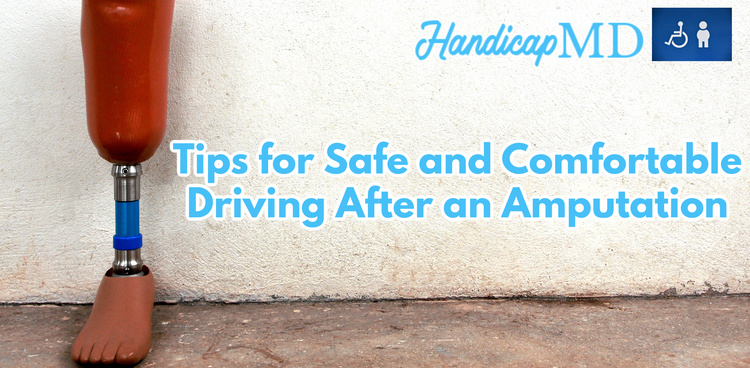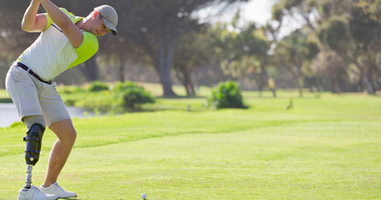
Explore Some Tips for Safe and Comfortable Driving After an Amputation
The loss of a limb can often be one of the most traumatic events in a person’s life. Uprooted from their normal life, they suddenly have to recalibrate and change what most take for granted.
If you've been wondering whether it is possible for you to drive after an amputation, the good news is Yes.
Tips for safe driving after losing part of or your entire limb
Medical content reviewed by Dr Eric Jackson-Scott MD, Chief Medical Officer 
Reminders before driving
It's important to keep in mind that you might need at least one modification or be required to change to an automatic car to make driving more comfortable and most importantly, safer.
In some cases, however, it is still possible to drive a car with a manual transmission. For such situations, it's highly advisable that you seek advice from relevant medical experts such as your prosthetist, physical therapist, and primary care doctor.
Medical experts will not only recommend the most appropriate equipment and modifications for your case, but they can also help you determine if you are ready to start the re-learning process.
In the majority of situations, you are required to find information about your state's DMV (link: https://www.amputee-coalition.org/limb-loss-resource-center/community-connections/) for reasons such as updating your medical information and reporting your amputee life. That way, you will be more aware of what you need to continue driving legally.
Amputation of the upper limbs
- Above-or-below-elbow (Single arm)
For this situation, you should do well with a steering knob to facilitate better control using one hand. In some cases, it is necessary to have your dashboard controls modified depending on the arm that has been amputated
- Both upper arms (Full or partial)
The best modification for this is the addition of a foot steering system that allows steering control in addition to the use of dashboard controls with a single foot.
- Partial hand
For this kind of limb amputation, the extent of your injury should be the guiding factor as to how you should modify your car. It's mostly possible to control your car normally or with minor modifications.
If, however, you are not comfortable and aspects such as grip are compromised, it's best to seek assistance from medical experts to determine the most suitable modifications.
Amputation of the lower limbs
- Bilateral lower limb (Full or partial)
For this situation, the best modification to consider is the addition of special hand controls to make driving easier. The most common modifications for this case are a steering knob and a lever that is placed on the left side so that you can use it to brake and accelerate.
- Above-or-below-knee (Right leg)
In this case, you can have your foot pedal positions changed so that the accelerator pedal is on the left side of the brake. Alternatively, you can go for special hand controls as in the previous case.
- Above-or-below-knee (Left leg)
In such situations, it should still be possible for you to drive almost any regular automatic car using the right leg.
If you are suffering from back pain and need to a DMV disabled parking permit online - direct pay - no insurance needed - click below get started here
.png)





